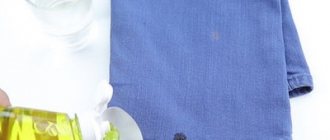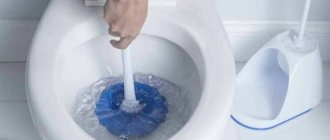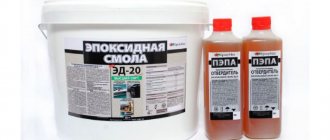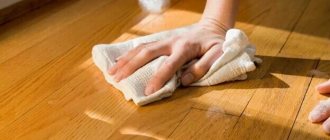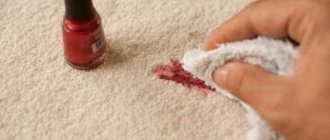Stainless steel is very often used in the kitchen. It is used to make dishes (pots, spoons, etc.), sinks, interior elements (bars, stands), hoods, stoves, etc. This is due to the fact that the metal is very strong, durable and has good performance characteristics. Stainless steel, thanks to its chrome plating, is very resistant to various adverse influences and corrosion. It looks great, the shine is pleasing to the eye. However, it easily loses its appearance if not properly cared for. How to remove stains from stainless steel if it has lost its appearance?
How to clean steel surfaces?
How to clean stainless steel products
- Baking soda. A universal remedy that every housewife has. ...
- Activated carbon. It perfectly removes dirt, for example from burnt milk or other products. ...
- Vinegar. Another universal remedy. ...
- Ammonia.
Interesting materials:
How many teraflops does 1080 have? How many teraflops does PS5 have? How much dough should I put in the mold? How much does an electric stove last per month? How much fabric do you need for men's boxer briefs? How many tons of raspberries can be harvested per hectare? How many tons of earth are in 1 cube? How long does it take to study eyelash extensions? How long does it take to study to become an entrepreneur after 9th grade? How long does it take to study to become a psychologist in Belarus?
Remedies for carbon deposits
Dark spots on stainless steel are carbon deposits (soot), which occurs after drops of fat enter. If you don't clean the dirt right away, it will harden over time. The hard “coating” darkens, so it is difficult to remove using conventional methods.
Before you clean stainless steel from dark stains, it is important to choose the right composition. On the outside, baking soda works best to remove carbon deposits. The raw material has mild abrasive properties, so it must be used carefully. Hot water is poured into the container, and the walls are generously rubbed with a paste of powder and liquid soap. Periodically move the sponge over the surface, removing soot. After the moisture has cooled, the remaining mass is thoroughly washed off and rinsed with vinegar.
How to clean a kettle from stains Source ratatum.com
Food crumbs on cutlery and carbon deposits on the inner walls often grow into a hard crust. A solution of:
- soda ash – 2 tsp;
- liquid soap – 100 ml;
- PVA glue – 100 ml.
The ingredients are diluted in 4 liters of water and poured into the problem container. The moisture should completely cover the soot. The dishes with soot are placed on low heat and boiled for 20 minutes. After the liquid has cooled, dark stains can be easily removed with a sponge.
Special softening pastes will help remove remnants of burnt food (porridge, jam) or traces of escaped milk in stainless steel dishes. For example, activated carbon powder works well. The crushed tablets are poured onto the bottom and covered with water on top. After a quarter of an hour, the soot is removed with a sponge. Drinking coffee grounds have similar properties.
How to remove carbon deposits Source biolshop.com.ua
An acidic environment will help remove greasy deposits from stainless steel. Both table vinegar and lemon juice solution will do. Water is poured into the problematic dishes and a cleaning ingredient is added. If liquid, then 100 ml. Take 20 g of crystals from a bag. Boil the moisture, leave it to cool for 1 hour, then heat it up to 100 C. In advanced cases, you can keep it all night. After time, dark spots are removed with a sponge.
Stainless steel sinks and hoods are washed with an acidic solution. Small stains can be wiped off with a slice of lemon, large stains can only be wiped off with a generous application. For convenience, spread the composition over the surface with a soft sponge. A paste mixed in equal quantities of soda and dry mustard will help enhance the effect. After the fizzing is completed, the ingredients are washed off.
Stainless steel device Source gibbsbrand.info
How to clean stainless steel spoons?
Take a large bowl or saucepan, pour water and add two large spoons
salt and soda, heat the contents and carefully place
spoons
and forks into the solution. Cook for no more than 30 minutes, then rinse the utensils and dry them thoroughly.
Interesting materials:
What primer should I use to paint a car? What primer should I use before painting my car? What kind of primer can be applied over acidic soil? What primer for metallic paint? How thick should tile adhesive be? Which Japanese is the most reliable? Which inhaler is good? Which internet modem is the best? What internet provider? What is a good irrigator?
"Rainbow" on the bottom and walls
In addition to pinpoint stains, large colored (usually blue-violet) stains may also appear on stainless steel cookware. Their formation is also based on chemistry.
The fact is that stainless steel always has a thin translucent oxide film. Its thickness is hundredths of the thickness of the hair, however, when the metal is heated above 100°C, it gradually increases, and when it reaches a size of 0.1% of the thickness of the hair, it becomes noticeable to the eye due to the appearance of color (interference/oxide staining). The result of this process is also not a defect, since it does not affect either the characteristics of the cookware or the taste of the food.
Folk methods for cleaning a shiny pan from the outside and inside from burning
The best way to easily clean the inside of an old or burnt stainless steel pan is to boil it. Boiling water will help to effectively clean the inside of dishes and even get rid of very old dirt, soot and greasy deposits.
Minor stains on a stainless steel home pan that arise during the cooking process can be easily removed with a mild detergent.
For greater efficiency, it is worth adding soda and salt, laundry soap, and vinegar to this water. This method effectively removes dirt and helps restore shine and cleanliness to the pan.
Heating with salt
Another effective “grandmother’s” way to effectively clean a dirty stainless steel pan at home is heating it with salt. This type of cleaning is effective for cleaning the inside of the saucepan and for light soiling.
Salt will help get rid of many impurities.
If the contamination is strong and overheating with salt does not help, you can add soda, soap and water in addition to salt, and boil for an hour. This procedure will definitely be effective.
How to clean the bottom using boiling
The dirty bottom of the saucepan can be easily washed by boiling. Pour water into it and add baking soda, grate a piece of laundry soap and add table salt.
Anti-scale agents
Scale is a limescale deposit that appears when using hard water. The calcium carbonate in the liquid reacts with the metal, eventually forming a dense whitish layer. When boiling, mineral ingredients in the form of flakes settle to the bottom of the pan. A thin, sloppy coating appears on chrome surfaces of radiators, household appliances and furniture.
An acidic solution (lemon, vinegar) will help get rid of limescale deposits inside kitchen utensils. The liquid in the problem container is brought to 100 C, then boiled over low heat and left to cool for an hour. After time, the moisture is removed and the dishes are rinsed.
Removing plaque from the sink Source zen.yandex.com
An acidic environment will help remove a thin layer of limescale on a chrome tap, heated towel rail or furniture elements. The warm solution is distributed using a spray bottle or applied with a sponge. The procedure is repeated every 15 minutes. After an hour, wipe the surfaces with a damp cloth.
Heavy limescale deposits in a kettle or pan can be removed with Coca-Cola. Add 50% of the carbonated drink to the kitchen utensils and slowly bring to a boil. The scale is scrubbed off after 30 minutes with a regular sponge.
Soda for stainless steel
Regular baking soda is one of the best detergents for cleaning dishes and removing dirt and stains. It copes especially well with fat. To clean dishes with its help, you must first wash the product, wipe it and sprinkle it with a thick layer of soda. Leave the pots and pans for 1-2 hours, then scrub thoroughly with a soft sponge and rinse.
You can make a slurry from soda: mix the product with a small amount of water to form a paste. Coat the dishes with the resulting slurry, let stand for a couple of hours, and then wash.
Types of corrosion
Effective additives that provide high-alloy alloys with anti-corrosion properties do not always solve problems with the appearance of defects. There are six main types of rust that affect stainless steel. It’s worth talking about them in more detail:
1. Crevice corrosion
. When designing products and massive metal structures, gaps arise or fastening points are not sealed well enough. Gradually, water or acidic reagents deactivate the oxide layer. If you do not create conditions in time in which the reaction stops, not only the attachment point, but also the fasteners will rust.
2. Pitting corrosion
. Occurs when the technology for working with stainless steel is violated. Aggressive external environment, small particles of metal dissolve the protective oxide layer, penetrating deep into the alloy, forming pitting.
3. Galvanic corrosion
. The condition for its manifestation is a conductive medium. Stainless steel comes into contact with aggressive reagents and the destructive properties of the protective layer of chromium are fully manifested.
4. Intergranular corrosion
. There are conditions under which steel crystals fall out when welding stainless steel. Pinpoint gaps are formed, in which rust subsequently develops.
5. General corrosion
. It occurs when iodine, chlorine, and fluorine get on the surface, destroying the molecular structure of the chromium-containing protective layer.
6. Erosive corrosion
. Occurs under conditions of constant mechanical impact on the surface of stainless steel.
Cleaning thermoses
It is worth knowing how to care for thermal cookware, which is always ready to “delight” us with hot coffee, tea and even lunch. First of all, you just need to remove unnecessary leftover drinks or food. Because the smell that is formed as a result is quite difficult to remove simply by washing the dishes.
How to clean a stainless steel thermos? All such products are subject to appropriate processing immediately after purchase.
- If this is not done immediately, the prepared coffee or tea will be impossible to drink due to the extremely unpleasant odor.
- To prevent this from happening, you must first wash the product with liquid dish soap and then rinse it several times.
- After which the open thermos should dry thoroughly.
- The thermos should always be opened and ventilated when empty.
Thorough cleaning is required at every opportunity. It is usually filled halfway with water and soap and shaken well for a while.
You can use a brush with “delicate” bristles. The product is always rinsed more than once.
What is prohibited to use?
To avoid damaging the integrity of the stainless steel sink surface and leaving a number of unsightly scratches on it, you should not use abrasive substances. Metal brushes will damage the structure and scratch the stainless steel coating. Products containing ammonia can leave dark oxidized traces. You should also exclude whiteness, and if you still cannot do without it, monitor the time of its interaction with the stainless coating. The product should be washed off immediately after immediate cleaning.
What metal can rust?
Technically, only iron and alloys containing iron can rust. Other metals, including precious metals such as gold and silver, can undergo similar corrosion. What sets certain metals apart is the time it takes for them to begin to rust or corrode.
Interesting materials:
How to change time zone on command line? How to change time zone? How to change data on the Pension Fund website? How to change the background in Tik Tok? How to change PDF format to TXT? How to change raw format to fat32? How to change the monitor brightness of an HP all-in-one PC? How to change the language on the on-screen keyboard? How to change the language on the Android keyboard? How to change the language on the mini keyboard?
